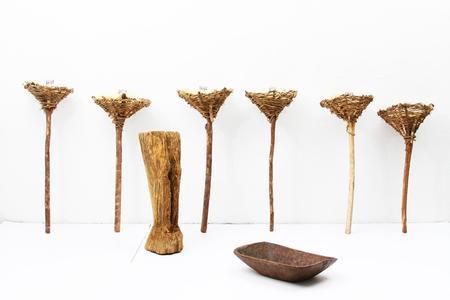Colombians Commemorate First Official Day Honoring Conflict Victims
Tuesday, April 10, 2012
On April 9, Colombians commemorated the nation’s first Victims Day with public events and activities across the country. In Bogotá, victims of violence marched with fellow citizens from the Jorge Eliécer Gaitán Municipal Theater to the Plaza Bolivar for a concert sponsored by the Bogotá’s mayoral office. The march passed through four stations set up by non-governmental organizations featuring galleries, art pieces, and performances dedicated to the memory of victims of conflict in Colombia.
“This day will go down in the history of Colombia, because today we are taking an important step toward reconciliation in this country,” said Colombian president Juan Manuel Santos during a commemoration in Villavicenio, Meta. He presented reparations to selected victims saying, “Peace begins with reparations for victims.”
On April 9, 1948, then Colombian presidential candidate Jorge Eliécer Gaitán was assassinated. His death unleashed decades of conflict known as La Violencia, or The Violence. Colombians have long-marked the date in commemoration of Gaitán’s death, but Colombia’s National Victim’s Law, passed last year, formalized April 9 as the National Day of Memory and Solidarity With Victims. The law called on the State to “carry out events in memory and recognition of the acts that have victimized Colombians, and [to] also carry out special activities related to the promotion of the rights of victims.”
While both the national and city governments supported public activities yesterday, civil society groups have been working for years to document victimization in Colombia. These groups have created and publicly displayed memory galleries that represent victims’ interpretations of the violence they have endured and offer analysis of the country’s conflict. In 2007, the Colombian non-governmental organizations Minga, Agenda Caribe, and the Manuel Cepeda Vargas Foundation collaborated with the U.S.-based NGO Lutheran World Relief (LWR) to develop a memory gallery based on the experiences of communities in two regions particularly marked by violence in recent decades: Putumayo Province and San Onofre, Sucre. The gallery, which was first on display in communities throughout the United States and then in the U.S. Congress, took on new life this year with support from the U.S. Institute for Peace. Focusing on communities victimized by violence in Catatumbo and Montes de Maria, this second gallery is entitled “We Are Land.”
“We Are Land” opened on March 20 at Bogotá’s Rosario University and was on display on April 9 in Parque Santander, in downtown Bogotá, as part of the city’s Victims’ Day commemoration. It will be up for public viewing later this year in Cucuta, Cartagena, and Putumayo. The following photo essay is a series of images of the "We Are Land" gallery and events in Bogotá on April 9.





